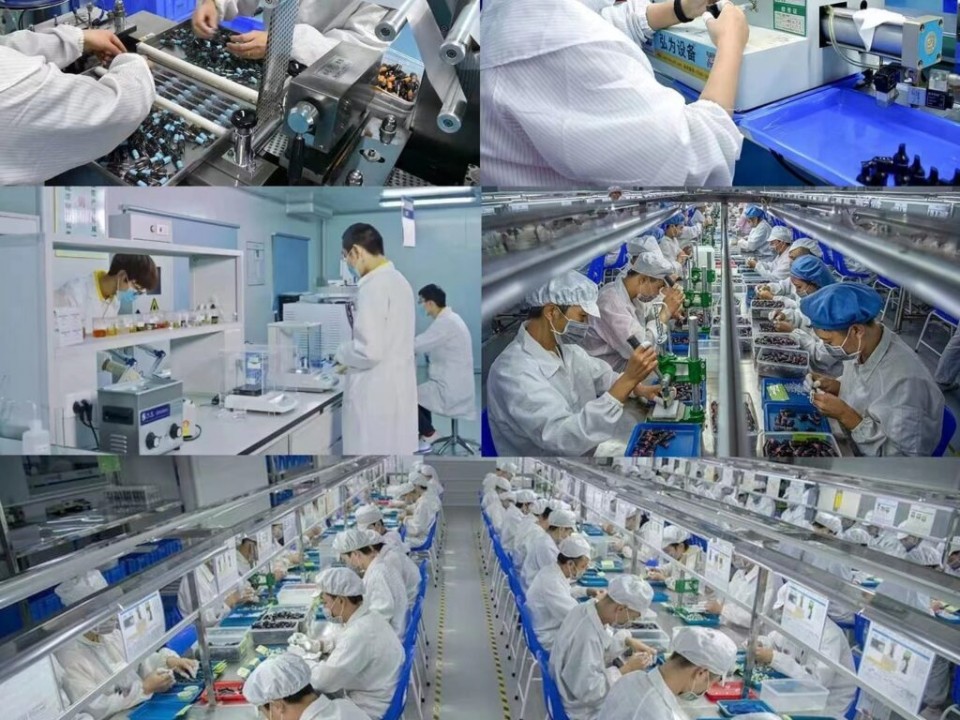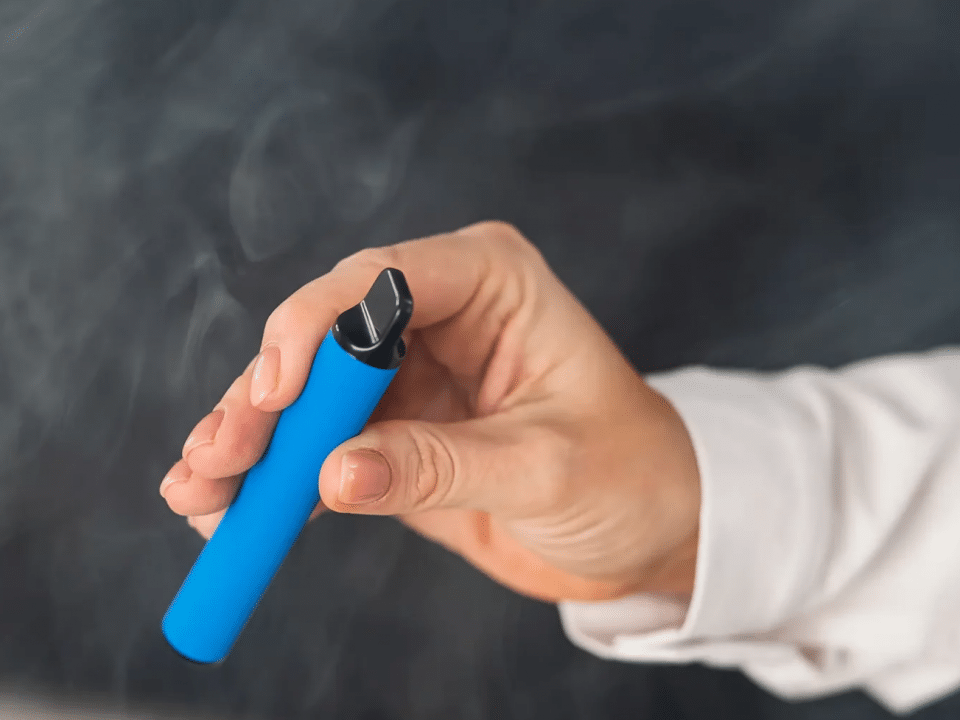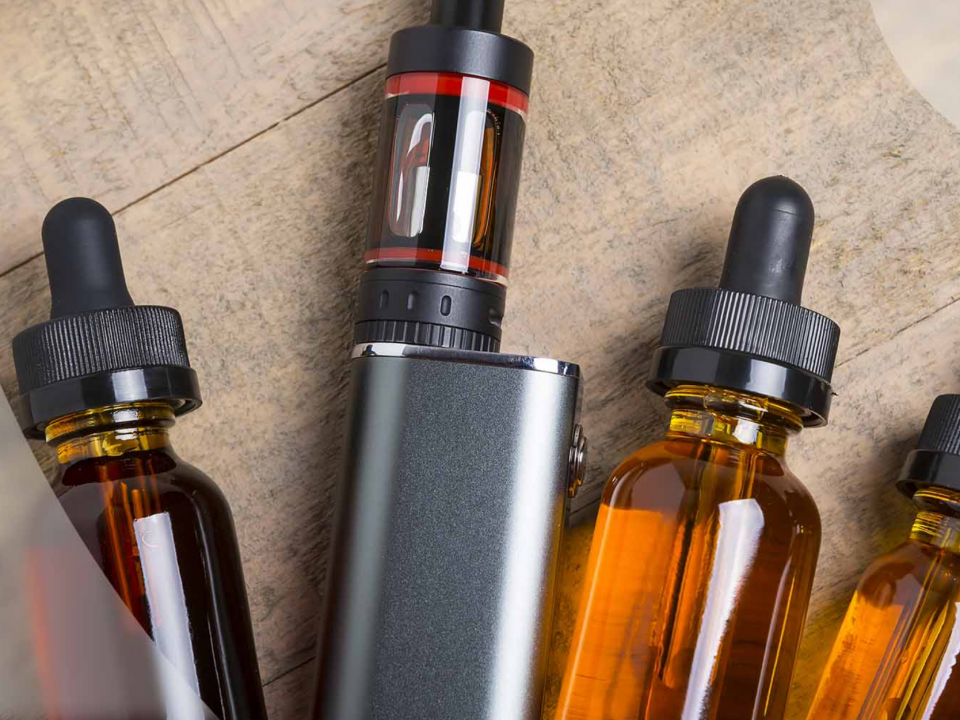
Top 10 Disposable Vape Manufacturer 2025
November 12, 2024
Best Online Vape Stores in 2024: The Top 10 Online Vape Shops
November 20, 2024Since the 1950s, propylene glycol (PG) has been widely used as an additive across various industries. It is a key ingredient in many products, including vape(or name e-cigarettes), foods, and even theatrical fog machines.But what exactly is the role of propylene glycol?Is it truly safe for the human body given its widespread use?
In this guide, we’ll explore what propylene glycol (PG) is, its common uses, potential health risks, and how it compares to vegetable glycerin (VG).
What is Propylene Glycol?

Propylene glycol(IUPAC name: propane-1,2-diol) is a viscous, colorless liquid. It is almost odorless and has a faintly sweet taste. Its chemical formula is CH3CH(OH)CH2OH. As it contains two alcohol groups, it is classed as a diol. An aliphatic diol may also be called a glycol. It is miscible with a broad range of solvents, including water, acetone, and chloroform. In general, glycols are non-irritating and have very low volatility.
It is produced on a large scale primarily for the production of polymers. In the European Union, it has propylene glycol E1520 for food applications. For cosmetics and pharmacology, the number is E490. Propylene glycol is also present in propylene glycol alginate, which is known as E405. Propylene glycol is a compound which is GRAS (generally recognized as safe) by the US Food and Drug Administration under 21 CFR x184.1666, and is also approved by the FDA for certain uses as an indirect food additive. Propylene glycol is approved and used as a vehicle for topical, oral, and some intravenous pharmaceutical preparations in the U.S. and in Europe.
Applications For Propylene Glycol
1. Lolymers
Forty-five percent of propylene glycol produced is used as a chemical feedstock for the production of unsaturated polyester resins.
2. Food and drug
Propylene glycol is also used in various edible items such as coffee-based drinks, liquid sweeteners, ice cream, whipped dairy products and soda.
3. Antifreeze
The freezing point of water is depressed when mixed with propylene glycol.
4. Electronic cigarettes liquid
Propylene glycol, vegetable glycerin,[22] or a mixture of both, are the main ingredients in e-liquid used in electronic cigarettes. They are aerosolized to resemble smoke and serve as carriers for substances such as nicotine and flavorants.
Is Propylene Glycol Safe?

Propylene glycol is widely regarded as safe for human use when consumed in moderate amounts.Propylene glycol has very low acute oral toxicity, meaning it takes a large amount to produce noticeable health effects in humans.Toxicity from propylene glycol typically occurs only at plasma concentrations above 4 g/L, which requires an exceptionally high intake within a short period. This level is usually reached only when propylene glycol is used as a carrier for drugs or vitamins administered in large doses intravenously or orally.
Because of its low chronic oral toxicity, propylene glycol was classified by the U.S.Food and Drug Administration(FDA) as “Generally Recognized As Safe” (GRAS) for use as a direct food additive, including frozen foods such as ice cream and frozen desserts.The GRAS designation is specific to its use in food, and does not apply to other uses.
Effective August 8, 2016, under the FDA rules, a company that mixes or prepares e-liquids is regulated as a tobacco product manufacturer.Under the same regulation, a company that sells e-liquids is regulated as a tobacco retailer.To ensure safety, it’s essential to choose a reputable vape manufacturer and vape shop that complies with FDA regulations for purchasing approved propylene glycol vape.
Common Health Concerns and Side Effects
Short-Term Effects
- Respiratory Irritation:Inhaling e-cigarette vapor with propylene glycol can cause temporary throat or airway tingling due to its moisture-absorbing properties, leading to slight dryness. This effect often fades over time or with a lower PG/VG ratio.
- Dry Mouth and Thirst:Propylene glycol’s water-absorbing nature can cause dry mouth or thirst. Frequent users should drink water to stay hydrated.
- Coughing:First-time e-cigarette users may experience coughing, often due to throat irritation from propylene glycol. Using low-PG can help reduce coughing.
- Dizziness or Lightheadedness:Some users may feel mild dizziness with nicotine-containing e-cigarettes, often due to nicotine levels and PG absorption. To reduce dizziness, try lower nicotine or beat no nicotine vape, or decrease usage frequency.
- Eye Irritation:When exposed to e-cigarette vapor with propylene glycol, some users may experience mild eye irritation as PG can affect eye membranes. To minimize this, avoid directing vapor toward the eyes and vape in a well-ventilated space.
Long-Term Effects
- Potential Respiratory Issues:Prolonged inhalation of propylene glycol may cause airway irritation and chronic cough. Those with respiratory sensitivities should consider using higher VG e-liquids or reducing PG intake.
- Impact on Immune System Function:While PG is widely used in food and drugs, its long-term immune effects via inhalation remain unclear. Animal studies suggest high-dose exposure may impact immunity; moderate, infrequent use is advised.
- Effects on Lung Health:Prolonged exposure to PG fumes may impact lung health, especially in users with asthma or respiratory issues. While human data are limited, animal studies link PG aerosol to lung inflammation. Users with lung conditions should opt for low-PG e-liquids.
- Risk of Dryness and Irritation in Mucous Membranes:PG’s moisture-absorbing nature may cause dryness in nasal, throat, and eye areas. Users should stay hydrated and consider low-PG e-liquids.
- Advice for Sensitive Populations:Children, pregnant women, and those with weak respiratory systems may be more vulnerable to PG’s long-term effects. Sensitive groups should use PG-containing e-liquids cautiously or avoid exposure altogether.
Additional Uses and Advantages of Propylene Glycol

Propylene glycol is a highly versatile ingredient with a broad range of applications and benefits beyond its use in e-cigarettes. Widely used as an additive in food, cosmetics, and fog machines, PG is a valuable component across various industries.
Propylene glycol In food products, it serves multiple purposes: as a preservative, it extends shelf life by inhibiting spoilage; as a flavor enhancer, it helps deliver and stabilize flavors; and as a solvent, it ensures even distribution of ingredients.
Additionally, PG’s hygroscopic properties prevent moisture loss, keeping foods fresh and retaining their texture. This multi-functional compound is more common than many realize, providing essential benefits across everyday products.
Summarizing the Safety of Propylene Glycol to Vape
In conclusion, propylene glycol (PG) is generally considered safe for use in e-cigarettes when consumed in moderate amounts by most users. While PG has been widely studied and approved for use in food and pharmaceuticals, the effects of long-term inhalation are still not fully understood.
For the majority of users, PG provides a satisfying vaping experience with manageable short-term effects, like mild throat irritation or dryness, which often decrease over time or with adjustments in PG/VG ratios.
However, individuals with respiratory sensitivities, lung conditions, or those in sensitive groups—such as children and pregnant women—may benefit from choosing lower-PG or VG-only options. By understanding personal tolerance levels and choosing products from reputable sources, users can make informed decisions about their e-liquid choices for a safer vaping experience.






